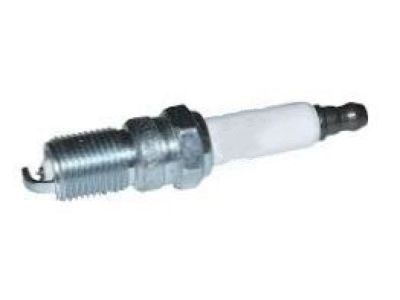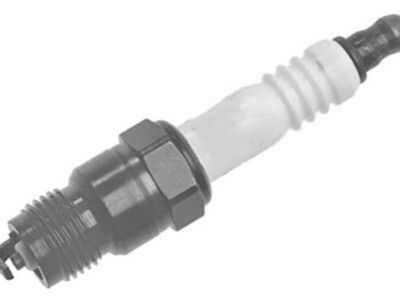
My Garage
My Account
Cart
Genuine Chevrolet Astro Spark Plug
Ignition Spark Plug- Select Vehicle by Model
- Select Vehicle by VIN
Select Vehicle by Model
orMake
Model
Year
Select Vehicle by VIN
For the most accurate results, select vehicle by your VIN (Vehicle Identification Number).
5 Spark Plugs found
Chevrolet Astro Spark Plug Assembly, Gas Eng Ign
Part Number: 12681665$8.72 MSRP: $16.46You Save: $7.74 (48%)Ships in 1-3 Business DaysChevrolet Astro Spark Plug Asm
Part Number: 19301811$7.57 MSRP: $13.76You Save: $6.19 (45%)Ships in 1-3 Business DaysChevrolet Astro Spark Plug Asm
Part Number: 19300382$2.30 MSRP: $4.18You Save: $1.88 (45%)Ships in 1-3 Business DaysChevrolet Astro Spark Plug Asm
Part Number: 19302741$2.30 MSRP: $4.18You Save: $1.88 (45%)Ships in 1-3 Business DaysChevrolet Astro Spark Plug
Part Number: 5614046$2.30 MSRP: $4.18You Save: $1.88 (45%)Ships in 1-2 Business Days
Chevrolet Astro Spark Plug
The Spark Plug of Chevrolet Astro is very essential in making the air-fuel mixture which needs to be ignited to facilitate the combustion process in the vehicle's engine. It works in a way that it receives a high voltage electric current from the ignition system which makes a spark that helps to ignite the mixture resulting into the combustion pressure that operates the pistons. The Chevrolet Astro has used over the time copper nickel Spark Plugs platinum Spark Plugs double platinum Spark Plugs and the iridium Spark Plugs every Spark Plug type is aimed at a specific ignition system and or performance. The main distinctions of these Spark Plugs are based on the materials of construction as well as the expected lifespan. The copper/nickel plugs are mainly found on old ignition systems because they are mechanically efficient when cold in comparison to the platinum and iridium plugs that have long duration and high temperature performance. Another feature with these plugs is that they are made to be double platinum thus suitable for the Distributorless Ignition Systems (DIS) and they do not wear out easily regardless of the environment they are used in.
Each OEM Chevrolet Astro Spark Plug we offer is competitively priced and comes with the assurance of the manufacturer's warranty for the part. Furthermore, we guarantee the speedy delivery of your orders right to your doorstep. Our hassle-free return policy is also in place for your peace of mind.
Chevrolet Astro Spark Plug Parts Questions & Experts Answers
- Q: How to replace spark plugs on Chevrolet Astro?A:The V6 models produced since 1996 contain long-life platinum tipped spark plug which have a service interval of one hundred thousand miles and therefore should not be cleaned or re-gapped but if their condition looks dubious they need replacement. To reach the spark plugs they should be replaced the hood should be open, and the engine cover removed. Additional requirements always involve spark plug socket that are fitted on ratchet, several extension and a gap checker for identifying and setting of appropriate gaps on the new plugs. It may be useful to loosen the wire boots from the spark plugs with a special plug wire removal tool, although it is not necessary, and a torque wrench is advisable for re-tightening of the new spark plug. It is recommended that the different plugs be bought in advance, standardized to the right gap, and then be installed on the cars one at a time after ensuring that the right type of spark plug is gotten from the Emission Control Information label found under the hood. Remove the plugs only after the engine has been turned off for some time; while waiting for it, one should inspect the new plugs for defects and correct the gap accordingly. It is measured by a standard thickness gauge, and it should equal the figure on the emissions label; such changes should be made slowly to avoid cracking the porcelain insulator. When you are disconnecting the spark plug then pull only at the bottom of the boot and twisting is allowed. Alternatively, the removal of debris such as sand from the spark plug hole can be done by blowing compressed air or use of bicycle pump. The rear plugs can be accessed by having to remove the engine cover, and possibly the wheels and the splash guard if need be. Compared with a spark plug reference chart, you can determine the current condition of the engine during operation; after the old spark plug is pulled out, coat a little anti-seize on the threads of the new spark plug to be put in. Screw the new plug into the hole and use a torque wrench or ratchet to tighten it up and remember in the process you need to use a rubber hose to avoid the situation where you lock the threads. Last but not the least, check the condition of the spark plug wire before clamping it over the new plug and twist the boot again to secure it well, and perform all these for the other spark plugs, and when changing the plugs, do it one after the other in a sequential manner to make sure you do not mix up the wires.
Related Chevrolet Astro Parts
Browse by Year
2005 Spark Plug 2004 Spark Plug 2003 Spark Plug 2002 Spark Plug 2001 Spark Plug 2000 Spark Plug 1999 Spark Plug 1998 Spark Plug 1997 Spark Plug 1996 Spark Plug 1995 Spark Plug 1994 Spark Plug 1993 Spark Plug 1992 Spark Plug 1991 Spark Plug 1990 Spark Plug 1989 Spark Plug 1988 Spark Plug 1987 Spark Plug 1986 Spark Plug 1985 Spark Plug














